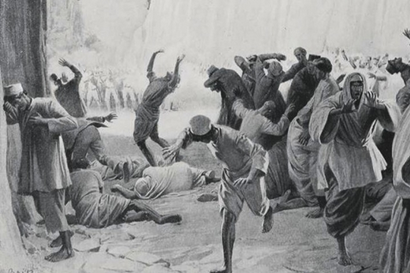13th April 2019 marks the centenary of the Jallianwala Bagh (Amritsar) massacre in colonial Punjab, India. Around 1,000 unarmed victims were indiscriminately killed and over 1,500 others were injured in just ten bloody minutes by a company of the British Army under the command of Colonel Reginald Dyer.
There was no escape for those who had gathered in the walled park of Jallianwala Bagh, as the British soldiers came in through the main exit point to suppress a protest in the park. At least 1,650 rounds of ammunition were fired, almost all of the stock being carried by the soldiers involved. Some in the park tried jumping into the well to avoid the gunfire, only to be crushed by others who attempted the same thing.
To this day the British government still refutes the figures of those killed and injured. There has been little acknowledgement of the incident by British authorities over the decades, with David Cameron describing it just as being ‘regrettable’ in 2013.
Fear of revolution
The context of this horrific event was an imminent fear of a revolutionary uprising in the Punjab. The fallout from World War One had significantly drained India’s resources and the Punjab had particularly suffered. Food grain prices had risen by 100% between 1917-1919, whilst soldiers from the region suffered a disproportionate amount of casualties during the war, given their status as a ‘martial race’.
Furthermore, the Bolshevik revolution in Russia had sent the British Colonial government into a state of paranoia, leading them to brutally suppress rights using the Rowlatt Act on 10 March 1919.
The Act effectively imposed martial law, allowing the colonial government to imprison any person it thought to be committing ‘terrorism’ for up to two years without trial. This indefinitely extended wartime laws passed in 1915, which stifled nationalistic sentiments within India because of its potential effects on the war effort. On top of detention without trial, press freedom was curtailed, allowing the police to act with complete impunity.
In the run up to the massacre there had been several small protests where the military had fired on and killed protestors. The violence that then ensued ended up being Dyer’s justification for his later heavy handed response.
Shockwaves
 13th April 1919 happened to be the Punjabi spring festival of Baisakhi, which also has religious significance for the Sikh community. Hence, on the day many worshippers came to celebrate with friends and family in the park in addition to those protesting against the arrest of local revolutionaries. It was on this fateful day that Colonel Dyer marched 90 men through the narrow alley that led to the Bagh.
13th April 1919 happened to be the Punjabi spring festival of Baisakhi, which also has religious significance for the Sikh community. Hence, on the day many worshippers came to celebrate with friends and family in the park in addition to those protesting against the arrest of local revolutionaries. It was on this fateful day that Colonel Dyer marched 90 men through the narrow alley that led to the Bagh.
There was no prior notification. There was no imminent warning. There was only gunfire. In the later tribunal investigation, the Colonel made his intentions crystal clear: he didn’t want to disperse the crowd but to teach them a lesson. His only regrets were running out of ammunition and that the narrow lanes prevented the use of an armoured car.
The bloodshed that followed was so horrific that it caused shockwaves across India and went on to galvanise support for nationwide protests by the non-cooperation movement in the following year. For revolutionaries like Bhagat Singh and Udham Singh, this act of brutality greatly radicalised them to organise and overthrow colonialism in India.
To add insult to injury, Colonel Reginald Dyer came home to a hero’s welcome. Rudyard Kipling named him the “the man who saved India” and donated £50 to his £26,000 tribute awarded on his triumphant return home.
Inqalab Zindabad!
This massacre illustrated the raw brutality of British imperialism in India and showed the furthest extremes that the British were willing to go to to maintain Indian resources which were so valuable to them.
For this reason we do not forgive. But far more importantly: we must never forget.
Inqalab Zindabad! Long live the revolution!




